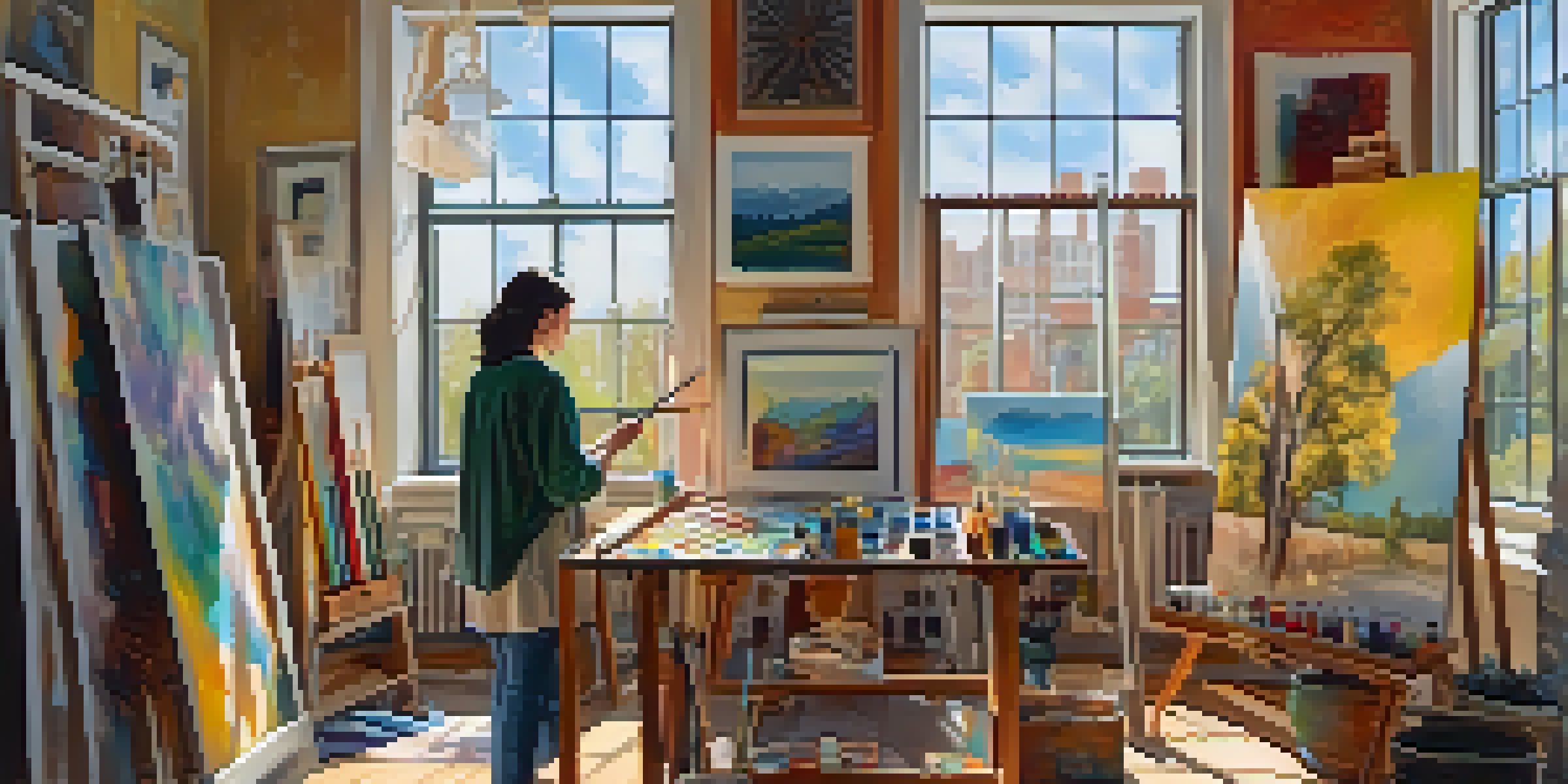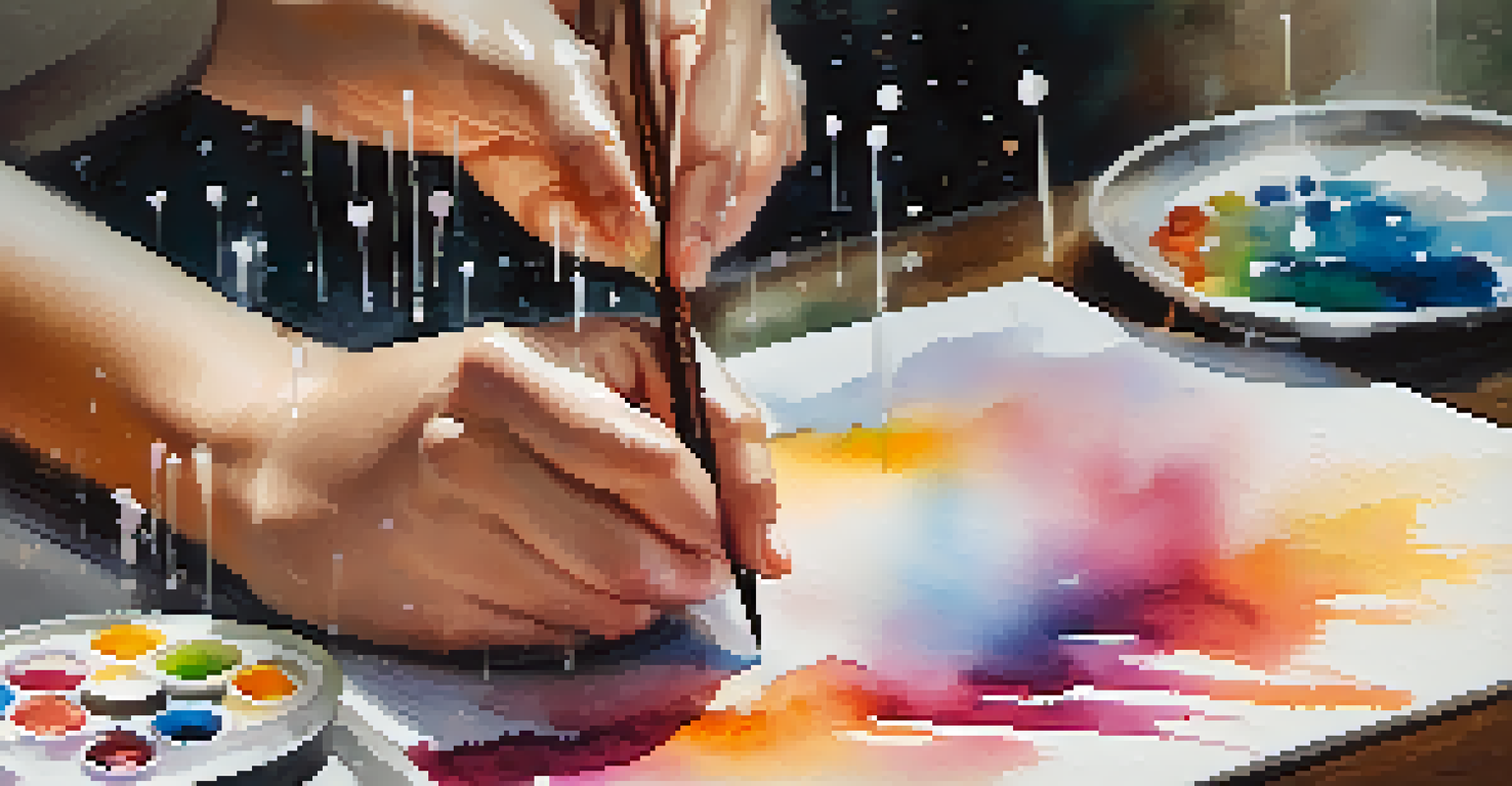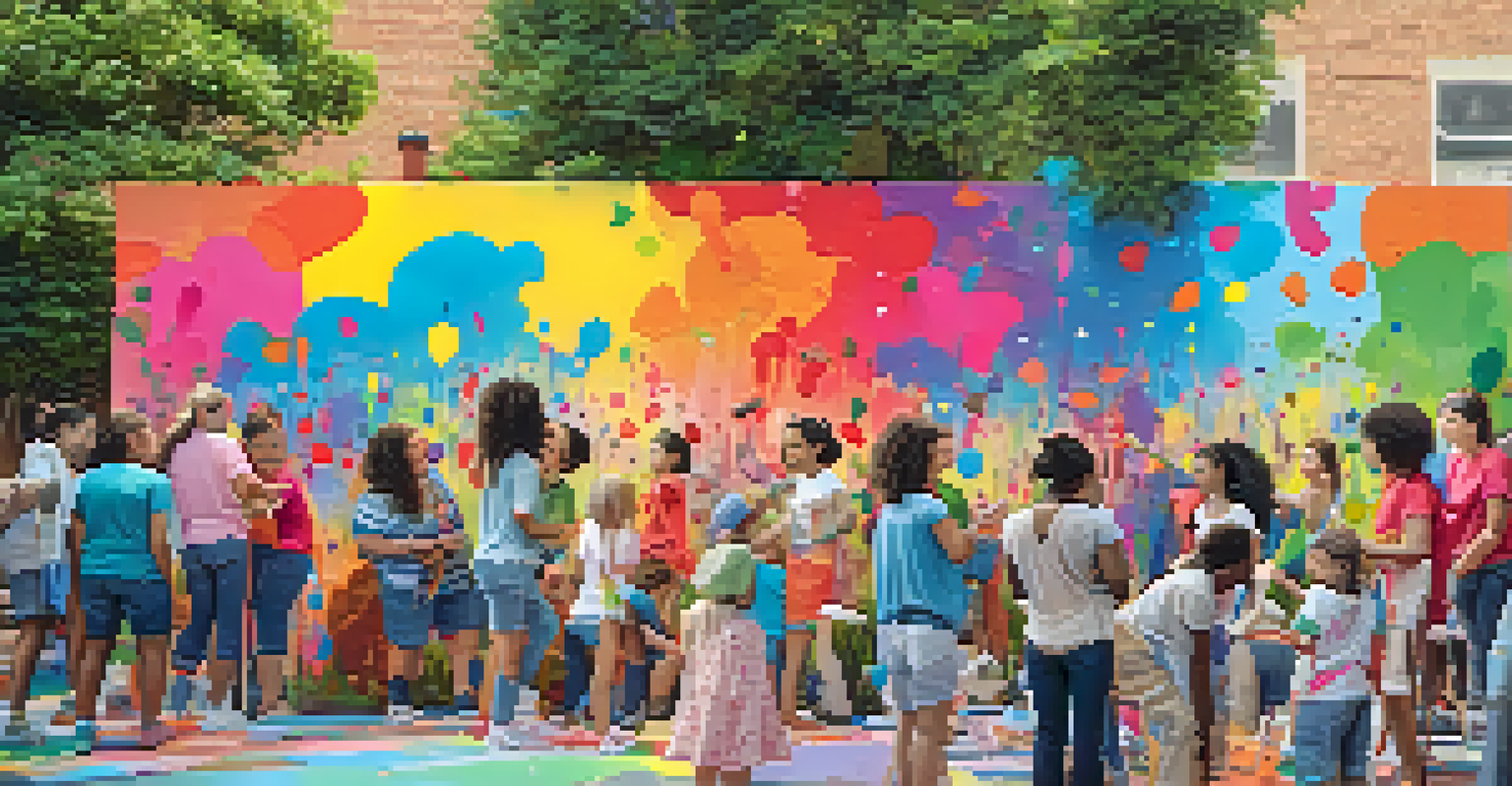Art as a Tool for Stress Relief and Anxiety Management

The Connection Between Art and Mental Health
Art has a profound connection to mental health, serving as a powerful outlet for emotional expression. Engaging in creative activities can help individuals articulate feelings that may be difficult to verbalize. This connection is not just anecdotal; research has shown that art therapy can significantly reduce symptoms of anxiety and depression.
Art is not freedom from discipline, but disciplined freedom.
When we immerse ourselves in artistic endeavors, whether it’s painting, drawing, or even crafting, we create a space where our minds can relax. This creative process encourages mindfulness, allowing us to focus on the present moment instead of worrying about the past or future. Just like meditation, art helps to quiet the chatter of our minds.
Furthermore, creating art stimulates the release of dopamine, a neurotransmitter associated with pleasure and reward. This biochemical response can enhance our mood and promote a sense of well-being, making art a valuable tool for anyone seeking relief from stress.
How Creating Art Reduces Stress Levels
Creating art can be a soothing experience, almost like a form of meditation. When we concentrate on colors, shapes, and textures, we shift our focus away from stressors. This engagement in a creative process allows our brains to enter a 'flow state,' where time seems to disappear and worries momentarily fade away.

Moreover, the act of creating provides a sense of control during chaotic times. Whether it’s molding clay, painting on a canvas, or sketching in a notebook, these activities allow us to express ourselves freely without judgment. This self-expression can be incredibly liberating, helping to alleviate feelings of anxiety.
Art Enhances Mental Well-Being
Engaging in artistic activities can significantly reduce symptoms of anxiety and depression while promoting emotional expression.
Additionally, creating art can serve as a cathartic release for pent-up emotions. By translating feelings into visual forms, we can confront and process our experiences, leading to emotional clarity and reduced stress.
Art Therapy: A Professional Approach to Healing
Art therapy is a formalized approach where trained therapists guide individuals in using art as a means of expression. This therapeutic practice helps clients explore their emotions and experiences through creative outlets. Art therapists combine psychological principles with artistic techniques to facilitate personal growth and healing.
Every artist was first an amateur.
In a safe and supportive environment, clients can uncover underlying issues that contribute to their anxiety or stress. Through guided art-making, individuals can gain insights into their feelings and learn effective coping strategies. This process often leads to heightened self-awareness and improved emotional regulation.
Furthermore, art therapy has been successfully implemented in various settings, including hospitals, schools, and community centers. Its versatility makes it accessible to people of all ages, providing a unique path to mental wellness.
The Benefits of Engaging with Art as a Hobby
Engaging with art as a hobby can be a joyful escape from daily stressors. Whether you're doodling in a sketchbook or attending painting classes, these activities can infuse creativity into your routine. Having a hobby not only promotes relaxation but also fosters a sense of accomplishment and satisfaction.
Moreover, art can serve as a social connector. Joining art classes or workshops provides opportunities to meet like-minded individuals, creating a supportive community. Sharing artistic experiences with others can enhance motivation and reduce feelings of isolation.
Art as a Stress Relief Tool
Creating art allows individuals to enter a 'flow state,' providing a sense of control and a cathartic release for pent-up emotions.
Additionally, the act of engaging in art can sharpen cognitive skills, boosting problem-solving abilities and critical thinking. These mental benefits can further equip us to handle life's challenges, making art a well-rounded approach to managing stress.
Mindfulness and Art: A Perfect Pair
Mindfulness, the practice of being fully present in the moment, pairs beautifully with art-making. When we engage in creative activities mindfully, we can enhance our sensory experiences, whether it’s feeling the texture of paint or noticing the colors we choose. This heightened awareness can ground us, reducing anxiety and promoting a sense of calm.
Practicing mindfulness in art can also lead to improved focus and concentration. As we immerse ourselves in the details of our artwork, we learn to quiet our racing thoughts. This practice can translate to other areas of life, helping us manage stress more effectively.
Furthermore, incorporating mindful breathing techniques while creating art can deepen the relaxation experience. Taking deep, intentional breaths while painting or drawing can soothe our nervous system, turning art into a holistic tool for anxiety management.
Art as a Community Experience for Stress Relief
Participating in community art projects can be a fantastic way to relieve stress while fostering connections with others. Community art initiatives encourage collaboration, allowing individuals to come together for a common purpose. This shared experience can create a sense of belonging and support, which is vital for mental health.
Moreover, community art events often provide a platform for self-expression and cultural exchange. By sharing personal stories through art, participants can foster understanding and empathy among diverse groups. This collective creativity can lead to stronger community bonds and a shared sense of purpose.
Community Art Builds Connections
Participating in community art projects fosters connections and creates a sense of belonging, which is vital for mental health.
Additionally, engaging in community art projects can boost morale and provide a sense of accomplishment. Working together towards a common goal can distract us from personal worries, promoting a positive outlook and reducing stress.
Incorporating Art into Your Daily Routine
Incorporating art into your daily routine doesn’t require hours of free time or artistic expertise. Simple activities like doodling, coloring, or crafting can be easily added to your day. Even dedicating just a few minutes to creative expression can provide a refreshing break from stress.
Creating a designated art space at home can encourage you to engage in creative activities regularly. This space can be as simple as a corner with art supplies or a cozy nook for writing. Having a dedicated area reminds you to prioritize creativity, making it easier to unwind and express yourself.

Additionally, try to explore different mediums to keep the experience fresh and exciting. Whether it’s trying your hand at photography, collage, or even digital art, experimenting can enhance your creative journey and provide new avenues for stress relief.